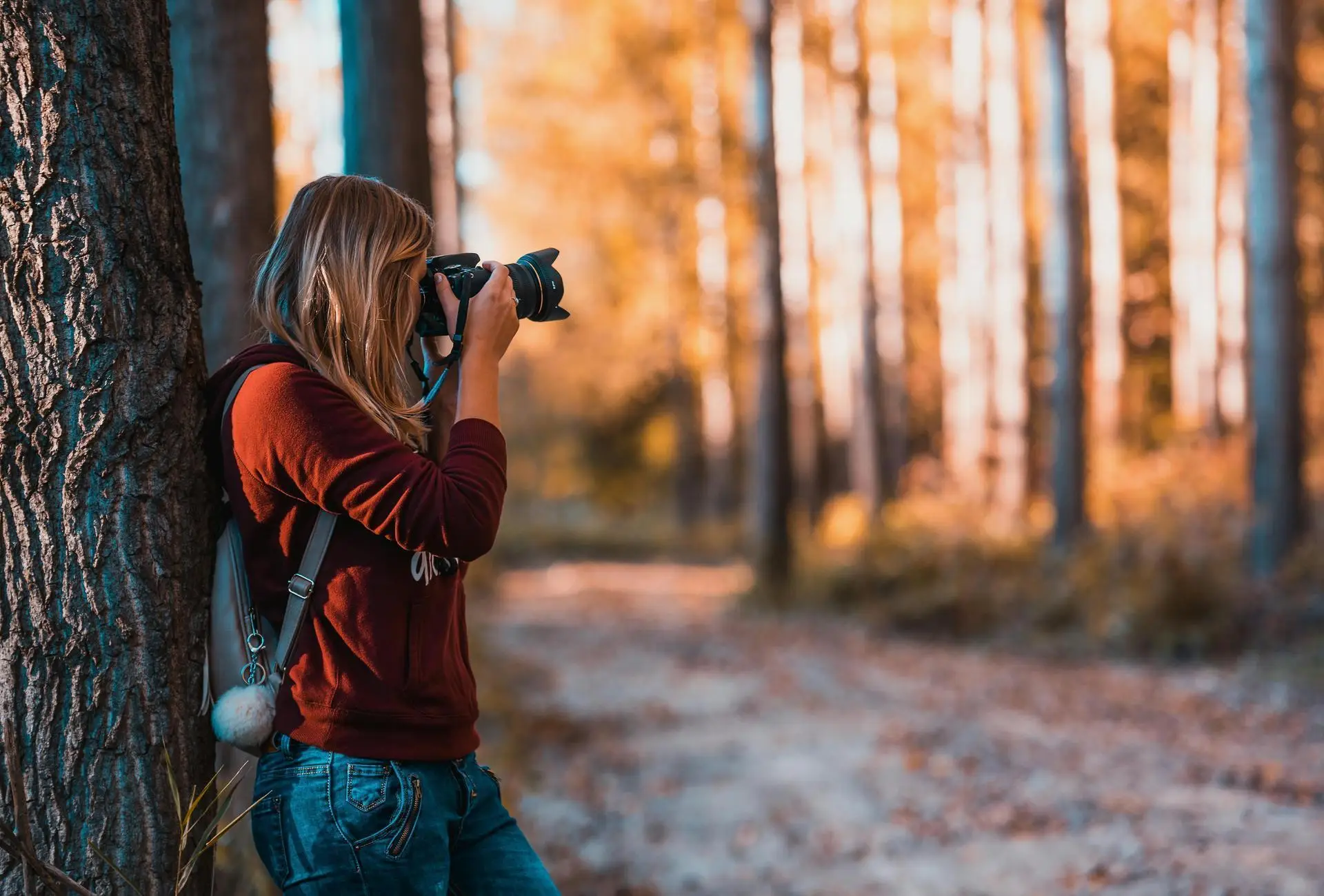The Art of Capturing Emotions in Candid Moments
Photography is more than just a technical skill; it is an art form that has the power to freeze time and evoke deep emotions. Among the many styles of photography, candid photography stands out for its ability to capture raw, unfiltered emotions. The art of capturing emotions in candid moments lies in the photographer’s ability to observe, anticipate, and document the beauty of spontaneity. Unlike posed photographs, candid shots reveal authentic emotions, making them timeless and memorable.
This article delves into the techniques, principles, and mindset needed to master candid photography and effectively capture the essence of human emotion.
Why Candid Moments Are So Powerful
Candid photography resonates deeply with viewers because it reflects reality in its purest form. Candid moments are unscripted and unplanned, making them relatable and emotionally impactful.
The power of candid photography:
- Authenticity: Candid photos capture genuine emotions, free from the influence of staged poses or forced expressions.
- Timelessness: The unfiltered nature of candid moments often makes them feel more meaningful and enduring.
- Emotional connection: Candid shots evoke empathy and allow viewers to connect with the subject on a deeper level.
By focusing on candid moments, photographers can create images that tell compelling stories and leave a lasting impression.
Understanding Emotion in Photography
Emotion is the heart of impactful photography. Whether it’s joy, sadness, love, or surprise, emotions give photographs their depth and meaning.
How emotions elevate photography:
- They create relatability: Viewers are drawn to emotions they can identify with or have experienced themselves.
- They tell a story: Emotions provide context and narrative, giving the photo a sense of purpose.
- They evoke feelings: A photo that captures emotion can make the viewer laugh, cry, or reflect, creating a powerful experience.
Mastering the art of capturing emotions requires an understanding of human behavior and the ability to anticipate meaningful moments.
Observing and Anticipating Moments
To capture candid emotions, a photographer must be a keen observer. The ability to anticipate a fleeting moment is what separates a great candid photographer from the rest.
Tips for observing and anticipating moments:
- Be patient: Candid photography requires waiting for the right moment to unfold naturally.
- Understand your subject: Familiarize yourself with your subject’s behavior and interactions to predict emotional moments.
- Stay unobtrusive: Blend into the background to avoid altering the subject’s natural behavior.
- Look for patterns: Pay attention to recurring gestures, expressions, or interactions that may lead to powerful moments.
By observing closely and staying ready, photographers can capture emotions at their most authentic.
The Role of Composition in Capturing Emotion
Composition is a critical element in photography, as it determines how the viewer perceives the image. In candid photography, composition helps emphasize the emotions and draw attention to the story being told.
Key compositional techniques for candid photography:
- Rule of thirds: Placing the subject off-center creates a more dynamic and engaging composition.
- Leading lines: Use natural lines to guide the viewer’s eye toward the emotional focal point.
- Framing: Frame the subject using surrounding elements to draw attention to their expression or action.
- Negative space: Leave empty space around the subject to emphasize their emotions and create a sense of isolation or focus.
A well-composed candid photograph enhances the emotional impact and makes the story more compelling.
The Importance of Light in Emotional Photography
Light plays a crucial role in setting the mood and tone of a photograph. The way light interacts with the subject can amplify emotions and create a more dramatic or intimate atmosphere.
How to use light effectively:
- Soft light: Diffused light, such as during the golden hour, creates a warm and gentle mood.
- Harsh light: Strong, direct light can add intensity and drama to a photo.
- Shadows: Incorporate shadows to add depth, mystery, or contrast to the image.
- Backlighting: Use light from behind the subject to create silhouettes or highlight emotional gestures.
Mastering the use of light allows photographers to evoke specific emotions and enhance the storytelling potential of their candid shots.
Capturing Human Connections and Interactions
Human connections are a rich source of emotion in photography. Interactions between people often reveal feelings of love, joy, tension, or compassion, making them ideal subjects for candid photography.
How to capture meaningful interactions:
- Focus on gestures: Small gestures, like a touch or a glance, can convey deep emotions.
- Highlight relationships: Photograph interactions that demonstrate the bond between individuals, such as a parent and child or close friends.
- Be discreet: Use a long lens or shoot from a distance to capture authentic interactions without disrupting the moment.
- Wait for the peak moment: Observe the interaction and capture the moment when emotions are at their strongest.
Photographs that showcase human connections resonate with viewers and tell powerful stories about relationships and emotions.
The Role of Timing in Candid Photography
Timing is everything in candid photography. The ability to capture the decisive moment—the split second when emotions peak—is what makes a candid photo truly memorable.
How to perfect your timing:
- Be prepared: Keep your camera settings optimized for the environment to react quickly.
- Shoot in bursts: Use continuous shooting mode to capture a sequence of moments and select the best one later.
- Anticipate movement: Predict where the subject will go or how the scene will unfold to position yourself accordingly.
- Practice mindfulness: Stay present and focused to recognize the perfect moment as it happens.
Perfect timing ensures that the emotions captured in the photograph are authentic and impactful.
Using Color and Tone to Enhance Emotion
Color and tone can greatly influence the emotional impact of a photograph. The choice of colors and the overall tone of the image can evoke specific feelings and enhance the story being told.
Tips for using color and tone effectively:
- Warm colors: Reds, oranges, and yellows convey warmth, passion, and energy.
- Cool colors: Blues and greens evoke calmness, sadness, or introspection.
- Monochrome: Black-and-white photography strips away distractions, focusing attention on emotion and texture.
- Color grading: Subtle adjustments to color balance and saturation can enhance the mood without overpowering the image.
By thoughtfully using color and tone, photographers can amplify the emotional resonance of their candid photos.
Staying Ethical in Candid Photography
Candid photography often involves capturing people in unguarded moments, which raises ethical considerations. Photographers must respect their subjects’ privacy and dignity while striving to capture authentic emotions.
Ethical guidelines for candid photography:
- Obtain consent: Whenever possible, seek permission to photograph people, especially in sensitive situations.
- Be respectful: Avoid capturing moments that could embarrass or harm the subject.
- Know the law: Familiarize yourself with local laws regarding photography in public spaces.
- Use discretion: Be mindful of cultural norms and personal boundaries when photographing strangers.
Ethical candid photography ensures that the emotions captured are authentic and respectful, preserving the integrity of the art form.
Practicing Patience and Persistence
Candid photography is not about instant results; it requires patience, persistence, and a willingness to adapt. The best candid shots often come after hours of observation and waiting for the perfect moment.
How to cultivate patience in photography:
- Slow down: Take your time to observe the scene and wait for meaningful moments to unfold.
- Embrace failure: Not every shot will be perfect, but each attempt is a learning opportunity.
- Stay curious: Keep exploring new environments and subjects to discover unique stories.
- Practice regularly: The more you practice, the better you’ll become at recognizing and capturing candid emotions.
With patience and persistence, photographers can hone their skills and consistently create powerful, emotion-filled candid photographs.
Creating Timeless Images Through Candid Moments
Candid photography is a celebration of life’s unfiltered beauty. By mastering the art of capturing emotions in candid moments, photographers can create images that are not only visually stunning but also deeply meaningful. Through observation, timing, composition, and ethical practices, photographers can tell powerful stories that resonate with viewers and stand the test of time.
By focusing on authenticity and emotion, candid photography becomes more than just a skill—it becomes an art form that connects people across cultures, languages, and generations.










